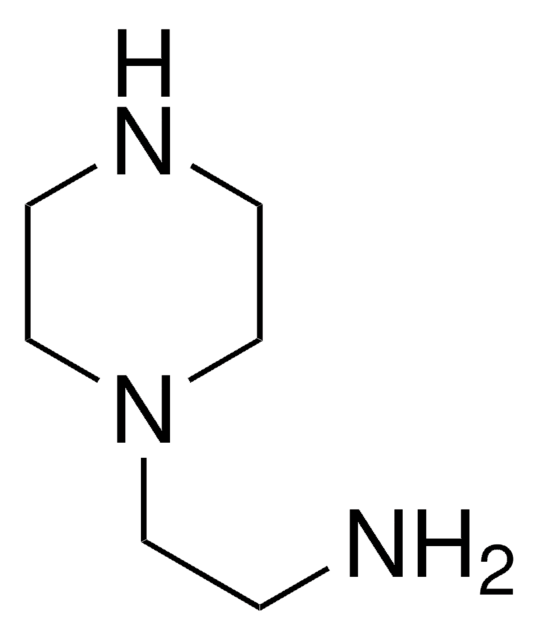161969
Triethylenetetramine tetrahydrochloride
97%
Synonym(s):
Cuprior, Trientine tetrahydrochloride
Sign Into View Organizational & Contract Pricing
All Photos(2)
About This Item
Linear Formula:
NH2CH2CH2(NHCH2CH2)2NH2 · 4HCl
CAS Number:
Molecular Weight:
292.08
EC Number:
MDL number:
UNSPSC Code:
12352100
PubChem Substance ID:
NACRES:
NA.22
Recommended Products
Assay
97%
mp
269-270 °C (lit.)
functional group
amine
SMILES string
Cl.Cl.Cl.Cl.NCCNCCNCCN
InChI
1S/C6H18N4.4ClH/c7-1-3-9-5-6-10-4-2-8;;;;/h9-10H,1-8H2;4*1H
InChI key
OKHMDSCYUWAQPT-UHFFFAOYSA-N
Related Categories
General description
Triethylenetetramine tetrahydrochloride is a copper-chelating agent
Application
Triethylenetetramine tetrahydrochloride was used as primary amine displacer in affinity chromatography.
Biochem/physiol Actions
Triethylenetetramine tetrahydrochloride induces apoptosis of acinar cells of the pancreas in male Fischer 344 rats.
Signal Word
Warning
Hazard Statements
Precautionary Statements
Hazard Classifications
Carc. 2 - Eye Irrit. 2 - Skin Irrit. 2 - STOT SE 3
Target Organs
Respiratory system
Storage Class Code
11 - Combustible Solids
WGK
WGK 3
Flash Point(F)
Not applicable
Flash Point(C)
Not applicable
Personal Protective Equipment
dust mask type N95 (US), Eyeshields, Gloves
Choose from one of the most recent versions:
Already Own This Product?
Find documentation for the products that you have recently purchased in the Document Library.
Customers Also Viewed
S Kishimoto et al.
Experimental and toxicologic pathology : official journal of the Gesellschaft fur Toxikologische Pathologie, 45(8), 489-495 (1994-04-01)
Male Fischer 344 rats weighing 80-90 g were fed on a copper-depleted diet supplemented with 0.6% triethylenetetramine tetrahydrochloride (a copper chelator), and the death of pancreatic acinar cells of these rats was investigated morphologically and biochemically. The weight of the
Structural characteristics of low-molecular-mass displacers for cation-exchange chromatography: II. Role of the stationary phase.
Shukla AA, et al.
Journal of Chromatography A, 872(2), 295-310 (1998)
Concetta R Capo et al.
Journal of trace elements in medicine and biology : organ of the Society for Minerals and Trace Elements (GMS), 44, 225-232 (2017-10-03)
The secoiridoid oleuropein is a non-flavonoid polyphenol, found in the fruit, leaves and food derivatives from Olea europea. Like other polyphenols it shows a very low toxicity towards healthy tissues and a protective action against cancer or neurodegeneration, but its
Our team of scientists has experience in all areas of research including Life Science, Material Science, Chemical Synthesis, Chromatography, Analytical and many others.
Contact Technical Service









